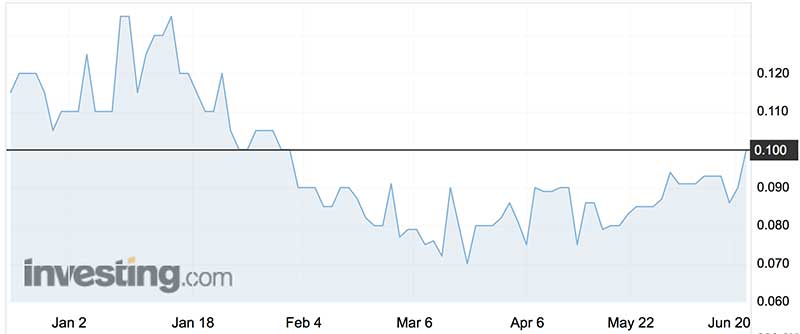Why gold stocks like Kalamazoo are a good bet despite a falling US gold price

Pic: Bloomberg Creative / Bloomberg Creative Photos via Getty Images
The steep fall in the Aussie dollar to 13-month lows is protecting local gold stocks against a sharp retreat in US dollar gold prices.
The fall in gold is itself a response to a strong US dollar on a rising interest rate outlook.
A 4 per cent slide in the Aussie over the last week to below US74c has allowed the local gold price to turn its back on weaker US prices — and actually post some gains to get to a historically high price of $1,721 an oz — up from $1,615 on June 30 last year.
The continuing bumper local price means the average Australian mine continues to enjoy margins of more than $600 an oz — even if the US gold price is on the skids in the wake of a rampant US dollar.
It’s why leading gold stocks are holding on to their elevated levels despite the disquiet in US gold prices.
It also means that the gold explorer/developer space — where investors go looking for leveraged exposure to the Aussie gold thematic — is continuing to bubble along.
It is against that back drop that Garimpeiro finds it somewhat remarkable that a tiny explorer called Kalamazoo Resources (ASX:KZR) has been able to secure control of Victoria’s historic 5.6 million oz Castlemaine goldfield — the State’s third biggest behind Bendigo and Ballarat — for next to nothing.
The next to nothing price was actually a standard application fee for the ground once Singapore-listed LionGold decided not to renew its licences to focus its attention on its Ballarat gold mining operation.
Much to LionGold’s credit, it has been very welcoming of Kalamazoo’s “expeditious’’ application for the ground once it knew LionGold had not renewed.

Its friendliness – something you probably wouldn’t come across in the more crowded WA mining scene – included handing over a 200GB data base, including 3D models of various deposits and 80,000m of drill core.
Kalamazoo is now working its way through the database and expects to begin defining drilling targets in the fourth quarter of the year.
Victoria has become a go to place for many explorers following the spectacular high-grade gold shoots found by Canadian mining group Kirkland Lake at its Fosterville mine near Bendigo, and the tantalising high-grade hits returned by Navarre (ASX:NML) and Catalyst (ASX:CYL) elsewhere in Victoria’s Golden Triangle with its historic production of 80m oz of gold.
The common thread is that the modern exploration effort in the State is benefitting from advances in exploration techniques and technologies — something that Kalamazoo too plans to do in its 70 sq km Castlemaine project area (40km south of Bendigo, and 100km northwest of Melbourne).
The historic Wattle Gully mine, 5km from the Castlemaine township, is covered by the project ground.
Major efforts were made in the late 1980s to revive the mine but the push fell victim to a slump in gold prices.
Kalamazoo is unlikely to want to have a crack at returning it to production, initially at least.
The preference will be to chase new gold positions on the Castlemaine field where past drilling has pulled up well short of that at Bendigo (and Fosterville) and Ballarat.
Kalamazoo gained 1.4c or 16 per cent to 10c on news of its Castlemaine pick up, giving it a market cap of $9 million.
Melbourne businessman Matthew Reinehr controls about 43 per cent of the stock.
Baillieu Holst has been appointed to assist with a capital raising to give the Castlemaine exploration program some firepower, as well introducing some much needed liquidity in the stock.
As an aside, Kalamazoo joined the ASX 18 months ago with a focus on Western Australian gold.
It takes its name from the little but hardy railroad engine car built in Kalamazoo in Michigan which found so many uses in the Australian mining scene back in the day.
UNLOCK INSIGHTS
Discover the untold stories of emerging ASX stocks.
Daily news and expert analysis, it's free to subscribe.
By proceeding, you confirm you understand that we handle personal information in accordance with our Privacy Policy.








